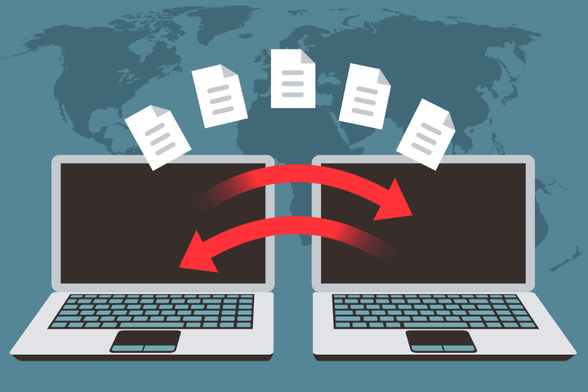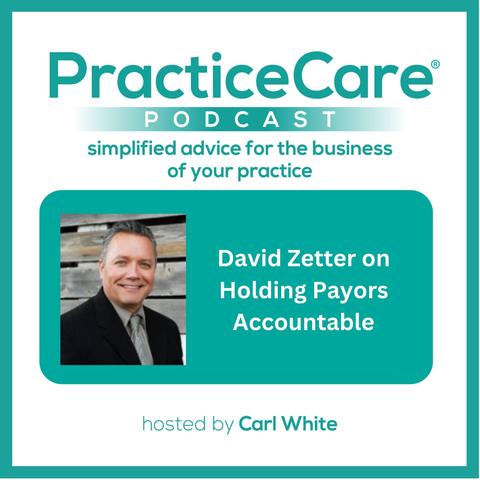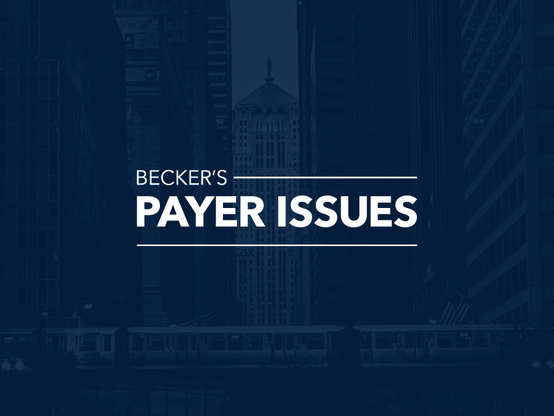DATE: October 04, 2025 at 05:09PM
SOURCE: PsychBilling Coach In the News by Susan Frager
-------------------------------------------------
TITLE: Medicare demands in-person! What happens now with telehealth?
URL: https://psychbillingcoach.com/news/what-happens-now-telehealth/
After 5 1/2 years, the COVID-era Medicare telehealth waivers expired October 1st when the government shut down. What happens now, if you’re seeing Medicare clients via telehealth?
I realize that anxiety is high and misinformation might be floating around online in professional forums. This stuff isn’t easy to sort through which is why it’s taken me a few extra days! That and, well, Life…
In response, I’m summarizing the most up-to-date information publicly available. Hopefully, reading the facts in plain English, and recommendations for actions with your clients, will be helpful. Everyone will need to decide what happens now in their practice.
What happens now with my clients?
The first thing to know about telehealth and Medicare is that unlike for medical issues, Medicare permanently covers telehealth for mental health treatment. If you click the link, scroll down to the section that’s specific to behavioral health.
• There are no geographic restrictions for mental health.
•
• Audio-only coverage is permanent for mental health.
•
This isn’t true for medical services. The type of practice/facility matters, too. If you practice in a federally-qualified health center (FQHC) or rural health center (RHC), their rules are different. So be sure the material you’re reading pertains to you!
For mental health private practice, the only thing new as of October 1st is that in-person visits are now required prior to telehealth services. And you / your Medicare clients are going to have some uncertainty for a while if you’re telehealth-only.
Will Congress “temporarily” waive in-person requirements again when they fund the government? Or maybe they’ll pass one of the pending bills which propose removing in-person requirements? Who knows! Instead, let’s focus on what happens now. Speculating about politicians is never very helpful!
Until further notice, the rules are:
• At least 1 in-person visit is required prior to any telehealth visits. The qualifying in-person session must be within 6 months of commencing telehealth.
•
• Thereafter, at least 1 in-person visit every 365 days is required.
•
The questions clinicians are asking:
• Are there any exceptions?
•
• What if I have no way to see a client in person?
•
• What about Medicare Advantage?
•
• If I’ve been seeing a client via telehealth all along, can I keep seeing them telehealth after October 1 and be paid? Or does my first October visit need to be in person?
•
• What should I do to ensure I get paid for telehealth visits going forward?
•
Are there any exceptions?
Yes, but ONLY about the in-person follow-up visit every 12 months. There is no exception whatever for new clients. New clients must be seen in person. (Unless the rules are changed again.)
Medicare describes the exceptions for in-person follow-ups with a lot of very non-specific words:
If the patient and practitioner consider the risks and burdens of an in-person service and agree that … these outweigh the benefits … and the practitioner documents the basis for that decision in the patient’s medical record, then the in-person visit requirement is not applicable for that 12-month period. …
…situations in which the risks and burdens associated with an in-person service may outweigh the benefit could include … instances when an in-person service is likely to cause disruption in service delivery or has the potential to worsen the patient’s condition(s). … Other examples … may include the clinician’s professional judgement that the patient is clinically stable and/or that an in-person visit has the risk of worsening the patient’s condition, creating undue hardship on self or family, or if it is determined that the patient is at risk for disengagement with care that has been effective…
Say what?
It would REALLY be nice if Medicare would say “we’ll cover A, B, and C, but not D, E, or F.” Unfortunately, that’s not how Medicare frames things.
Think of it this way: they’re actually TRUSTING clinicians to use clinical decision-making. What a concept!
Based on the above, if you documented in the client’s record things like these, you’d probably be okay in terms of Medicare agreeing that in-person follow-ups aren’t required:
• In-person appointments are impossible or inadvisable due to a medical condition and/or disability. List the specific issues. How or why does/do the condition(s) risk harm if visits are in-person? Medicare will be especially likely to agree with you if your records show that telehealth treatment to date has been effective.
• I’ve been asked if it can be the clinician’s issues, rather than the client’s, that can be the basis of an ongoing treatment telehealth exception. The statute linked above doesn’t specify that the issue be the client’s. A lawyer specializing in the Americans with Disabilities Act might be a good resource for this question.
•
•
• Client has transportation difficulties. Or maybe they live in a rural area. Maybe your office is a long commute. If they were told they had to be seen in person, how would this impact ongoing treatment? Be clear: exactly why isn’t it possible for the client to have only 1 in-person visit in 365 days?
•
Always be sure to emphasize safety in your documentation: is the client safely managed via telehealth? Document there are no risks present (for example: suicidality) that would necessitate an in-person contact.
This is by no means an exhaustive or definitive list. Auditors will agree (or not) based on the thoroughness of your documentation. It’s up to you to make a convincing case in the client’s clinical record for an in-person exception.
What if I have no way to see a client in person?
Medicare is going to ask why not. If the reason is that you’ve expanded your practice to geographic regions where clients live too far to travel to your office even once per year, then that’s probably not going to be grounds for Medicare agreeing to waive the ongoing in-person requirement.
But if the client can travel to where you’re located for an in-person visit just once per year, then the criteria would be met. So, for instance, let’s say you started services with a client who has since moved out of your area, but comes back occasionally to visit friends/family. Just arrange with the client to have an in-person session with them whenever they’re next in town. Problem solved.
(Note that the above is true whether the client lives in or out of the state you practice in. For this discussion, I’m assuming you’re appropriately licensed wherever you need to be).
Clinicians who’ve given up their physical offices are going to have to make a choice about what happens now with their practice. There are plenty of creative options.
• Arrange with a colleague to borrow their office on an as-needed basis.
•
• Set up an account at a co-working space* where you can rent a physical office by the day or hour, as needed.
•
• Medicare covers in-home visits (POS 12). There are definitely pros and cons to going to client homes to conduct sessions, but it’s an option.
•
• Find a medical practice you can arrange to rent from. Bonus: it might be a source of referrals!
•
• Join/form a local therapist networking/consultation group and rent an office together. The group would have to have someone willing to organize the logistics and take charge, but it could work. Maybe in recognition of the time it takes to do the paperwork, communicate with the landlord, pay the rent, manage the schedule / ensure everyone pays their share, that person could get their office hours at no charge.
•
IMPORTANT! If you add a physical office, even “as-needed,” or if you want to see clients in their homes, you’ll need to update your Medicare enrollment. Medicare typically won’t pay for a service location reported on a claim if that location hasn’t been added to your provider enrollment profile.
*If you’re going to use a co-working space, there are additional things you need to know contact me for a consultation prior to enrolling, to save yourself some headaches!
Some clinicians tell me they’re going do nothing and hope when the government is funded, the waiver will resume. Or that one of the pending telehealth bills will pass. Or that the 2026 Physician Fee Schedule, which should be released in about a month, will settle the in-person question.
This wouldn’t be my recommendation. However, there are many clinicians who are frustrated with low Medicare reimbursement, complex enrollment processes, and unfathomable rules. The resumption of in-person visit requirements might be the last straw for some. Regrettably, there will be clinicians who will respond by opting out of Medicare. Do the politicians understand this? That’s up to us.
What happens now with Medicare Advantage? Will they stop covering telehealth completely?
Not if they want to comply with existing federal law. A refusal to cover telehealth for mental health services would place an Advantage payer in violation of 42 CFR § 422.101, which states that Advantage plans must cover all services covered by Original Medicare. Since Original Medicare, Part B, covers telehealth for mental health, Advantage plans must as well.
With regard to the in-person visit requirement, it’s more complicated. Medicare Advantage plans must always cover anything Original Medicare does, but they also have the option to cover things that Original Medicare doesn’t. This is why so many people choose Advantage plans, even though there are restrictive networks and prior authorization. In the past, Advantage plans have covered dental, vision, hearing aids, over the counter medications, transportation to doctor appointments, gym memberships, and so forth.
What happens now with Medicare Advantage is that in-person visit rules are going to be at the discretion of each individual Advantage payer. If you don’t want to have to sit on endless hold trying to determine what every plan is going to require, my suggestion is to use Original Medicare rules with Advantage clients.
Can I continue to see existing clients via telehealth? Or do I need an in-person visit right away?
No one is 100% certain!
The APA’s opinion is that you can continue via telehealth with existing clients without first doing an in-person visit after October 1st. But even with existing clients, you’re still obligated to do the yearly in-person session sometime before September 30, 2026 unless the rules change again! However, the Center for Connected Health Policy seemed to think an in-person visit immediately after October 1 would be required.
At this time, my best guess is that the APA is correct as to what happens now. Why? Well, for one thing, they specialize in mental health whereas the Center for Connected Health Policy has to address all medical specialties. The APA cited the relevant passage from the 2023 Physician Fee Schedule Final Rule:
From page 69464: “However, we clarify that we do not believe this requirement applies to beneficiaries who began receiving mental health telehealth services in their homes during the PHE.”
While the PHE (the COVID public health emergency) has long since expired, the waivers to statutory telehealth policy kept getting extended. It’s those waivers which ended at midnight on October 1st.
What should I do to ensure I get paid for telehealth visits?
If in-person isn’t an option (for whatever reason), do two things at your first October telehealth visit:
• Have the client sign an Advanced Beneficiary Notification form this form allows clients to pay cash to an enrolled Medicare provider for non-covered services, either at time of service or if Medicare denies the claim. Be sure to use the appropriate modifier(s) if submitting claims!
•
• Document clearly and specifically why an in-person session wasn’t conducted.
•
We’re going to have a bit of a wait before we have a definitive answer to the question “what happens now.” Fortunately, my experience with Medicare’s auditors is that they usually choose records from periods when Medicare policy isn’t in flux which isn’t October 2025!
With regard to in-person visits, all anyone can do is attempt to follow the rules to the best of your ability, document clearly when and why you can’t, and make plans for the future given your individual situation. If you want to explore your options in a consultation, many of your colleagues have found it helpful.
URL: https://psychbillingcoach.com/news/what-happens-now-telehealth/
Articles can be found by scrolling down the page at https://psychbillingcoach.com/news/ under the title "In the News".
-------------------------------------------------
This robot is unaffiliated with PsychBilling Coach.
Private, vetted email list for mental health professionals: https://www.clinicians-exchange.org
Unofficial Psychology Today Xitter to toot feed at Psych Today Unofficial Bot @PTUnofficialBot
Psychology news and research articles at Psychology News Robot @PTUnofficialBot
NYU Information for Practice puts out 400-500 good quality health-related research posts per week but its too much for many people, so that bot is limited to just subscribers. You can read it or subscribe at @PsychResearchBot
Since 1991 The National Psychologist has focused on keeping practicing psychologists current with news, information and items of interest. Check them out for more free articles, resources, and subscription information: https://www.nationalpsychologist.com
EMAIL DAILY DIGEST OF RSS FEEDS -- SUBSCRIBE: http://subscribe-article-digests.clinicians-exchange.org
READ ONLINE: http://read-the-rss-mega-archive.clinicians-exchange.org
It's primitive... but it works... mostly...
-------------------------------------------------
#psychology #counseling #socialwork #psychotherapy @psychotherapist @psychotherapists @psychology @socialpsych @socialwork @psychiatry #mentalhealth #psychiatry #healthcare #psychotherapist #doctors #psychotherapist #hospital #HIPAA #privacy #BAA #patientrecords #telehealth #medicalbilling #SusanFrager







